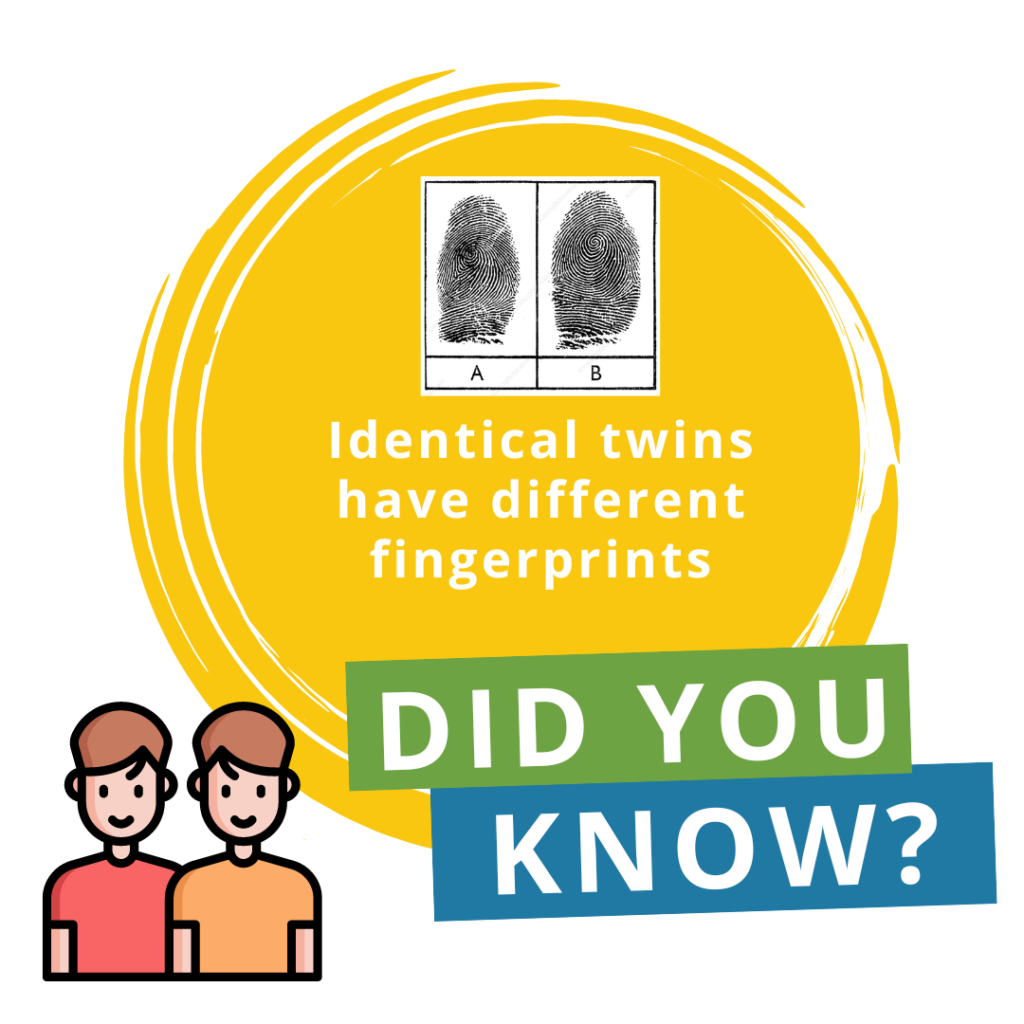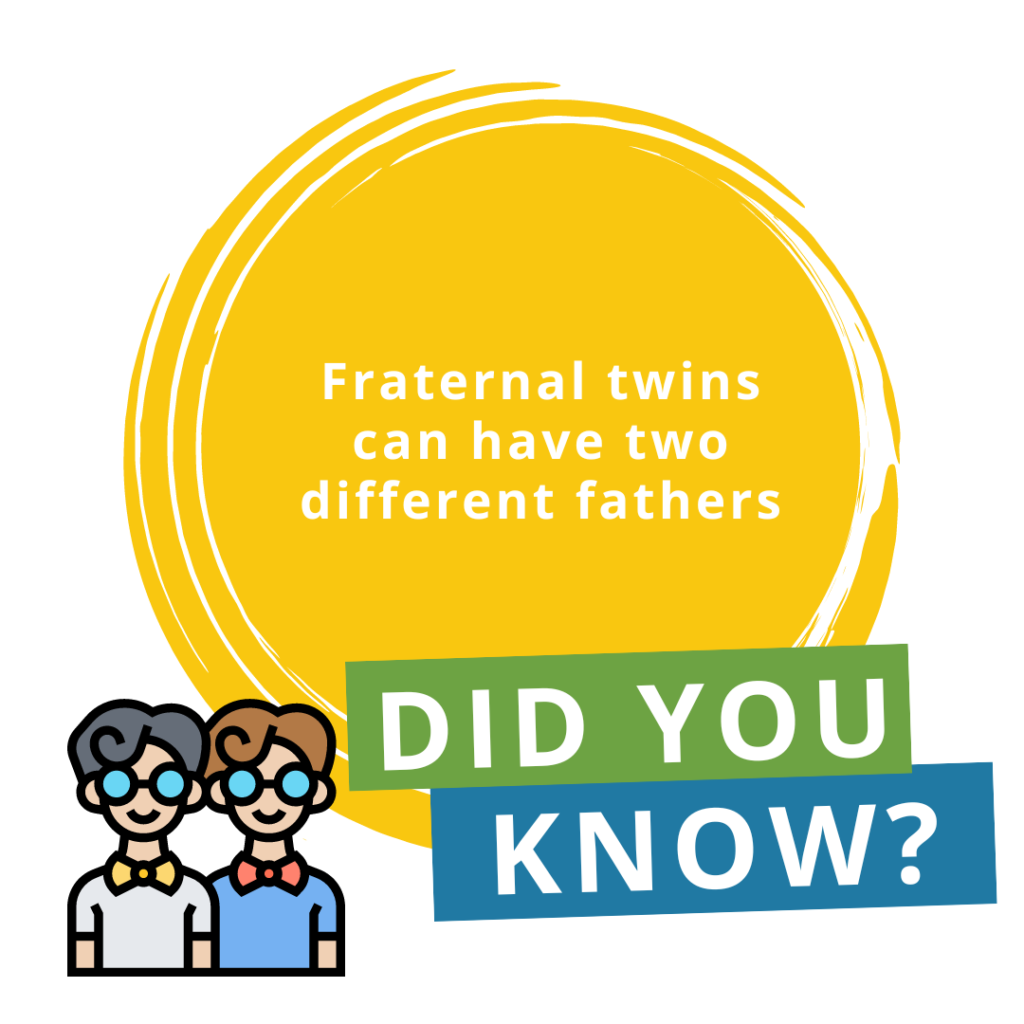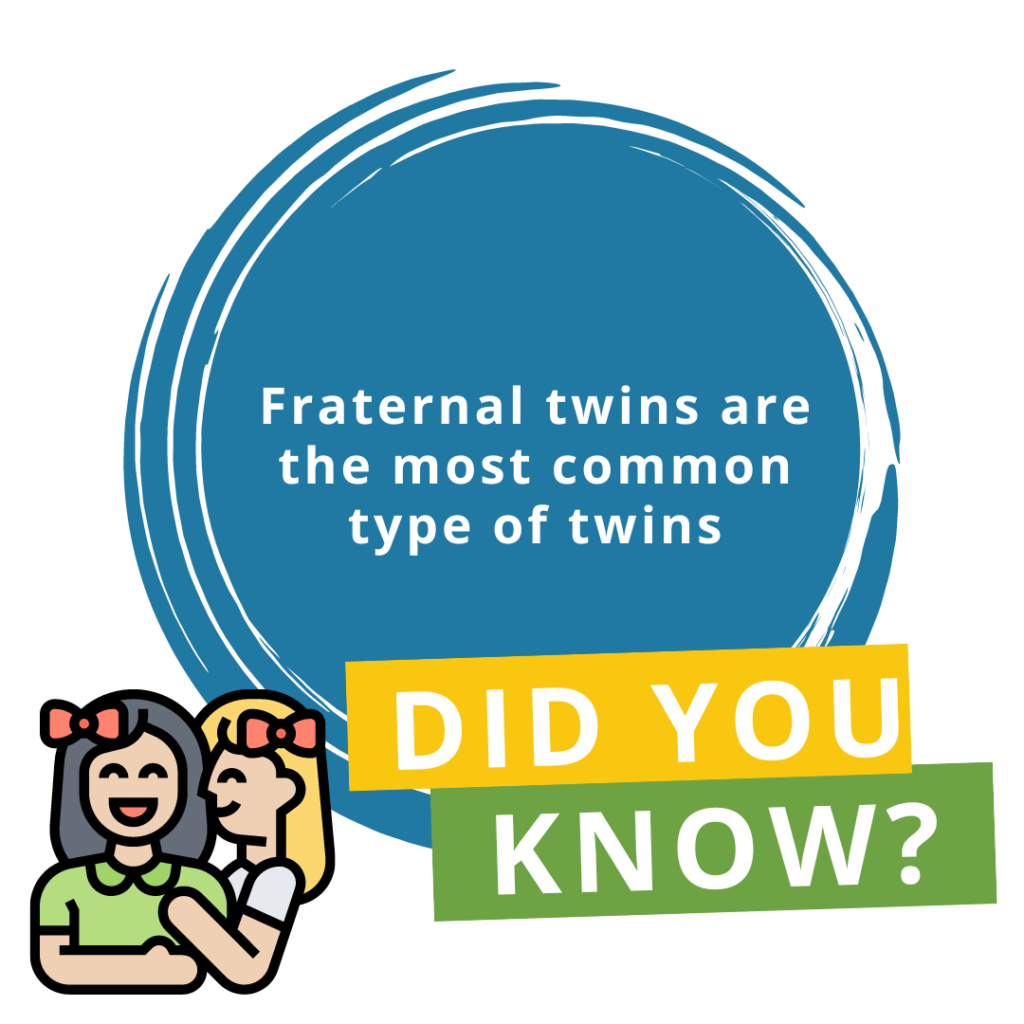
Facts about multiples

Identical twins do not have identical fingerprints, although they have very similar patterns. The fetus begins developing fingerprint patterns in the early weeks of pregnancy. Small differences in the womb environment result in each twin having different, but similar, fingerprints.

That’s right — this isn’t just something that you’ve seen in movies. It is called heteropaternal superfecundation or bi-paternal twins. This happens when a woman releases multiple eggs and has sex with more than one partner. The eggs are fertilized by sperm from different partners leading to fraternal twins, or more. It is more common in some animals like cats and dogs than humans.

People tend to talk more about identical twins, but a twin pregnancy is more likely to result in fraternal twins. Around 70% of all twins are fraternal.

Most identical twins happen by chance, although new research indicates there may be a “male factor” that contributes to identical twinning. Birth rates for identical twins are consistent among all races – about 4 per 1000 (0.4%).
The rates for monozygotic (identical) multiples are much lower than the rates for fraternal twins.
Frequency of having twins (of any kind)
Without the help of fertility treatments, and according to a mathematical rule that doctors use called Hellin’s law, about one in 90 births is twins, one in 8,100 births (90 squared) is triplets and one in 729,000 births (90 cubed) is quadruplets.
Frequency of having fraternal twins
The incidence of fraternal twinning varies among races:
- 16 per 1000 among people of African descent
- 8 per 1000 among Caucasians
- 4 per 1000 among Asians
Between 1980 and 2015, twin birth rates increased by 42 percent, resulting in an average 1.6 million twins born annually in the 2010s. Of course, medically assisted reproduction has been responsible for increased twin rates in several countries but the peak of that seems to have passed. Another reason the authors suspect there is an increase in twin births is that more adults are choosing to have children later in life. Having children later in life raises the chances multiple eggs will be released at once during ovulation, making conceiving fraternal twins more likely.
Why do fraternal twins run in families?
If a woman’s female relatives have fraternal twins, she is more likely to give birth to twins herself. Research has shown there are at least two genes associated with fraternal twinning. They show genetic links between having twins and female production of, and response to, follicle-stimulating hormone, which may help predict how some women respond to infertility treatments.
Factors that can increase your chances of having multiples
While fertility treatment increases the chance of having multiples, there are many other factors that can increase your odds of having twins or higher order multiples.
Some of them are:
● Age: A woman over 35 years produces more FSH (follicle stimulating hormone) than a younger woman. Women with more FSH can also release more than one egg for ovulation in one cycle. Data from the UK shows women aged 45 have around a one-in-ten chance of having multiples.
● Heredity: If there are twins in your family, or you’re a twin yourself, you are more likely to give birth to twins. Studies have shown that if your mother is a fraternal twin, your chances of having fraternal twins might be as high as 1 in 17.
● Race: Twins are more common than average in African Americans and less common in Hispanics and Asians.
● Number of pregnancies: If you’ve had many pregnancies before, your chance of having twins increases.
● Weight: Studies have shown that women with a body mass index of 30 or more have a significantly increased chance of having fraternal twins.
● Height: Tall women are apparently more likely to have twins.
● Conceiving straight after coming off the contraceptive pill: If you have been taking the pill for six months and then stop, your body will need about two cycles to get back on track. This in turn sees you receive excess hormone stimulation. This consequently causes the release of more than one egg, increasing your chances of having more than one of them fertilised.
● Diet: Studies show that women who consume a lot of dairy products have a higher rate of multiples. Consuming wild yams is also thought to increase the rate of multiples. Wild yams hyper-stimulate your ovaries and this might cause release of more than a single egg when you ovulate. Women who have a low-fat diet, especially vegans and vegetarians, are less likely to have multiples.
Odds of having more than one set of twins
If you have already won the “twin parent lottery”, what are the odds of having a second set of fraternal twins? If your first set of twins are fraternal, then your odds of having fraternal twins again jump to 1 in 12.
There are some notable cases of multiple multiples:
- The first wife of Feodor Vassilyev (b. 1707– c.1782), a peasant from Shuya, Russia, gave birth to 16 sets of twins.
- Barbara Zulu of Barberton, South Africa bore 3 sets of girls and 3 mixed sets in seven years (1967–73).
- Anna Steynvaait of Johannesburg, South Africa produced 2 sets within 10 months in 1960.